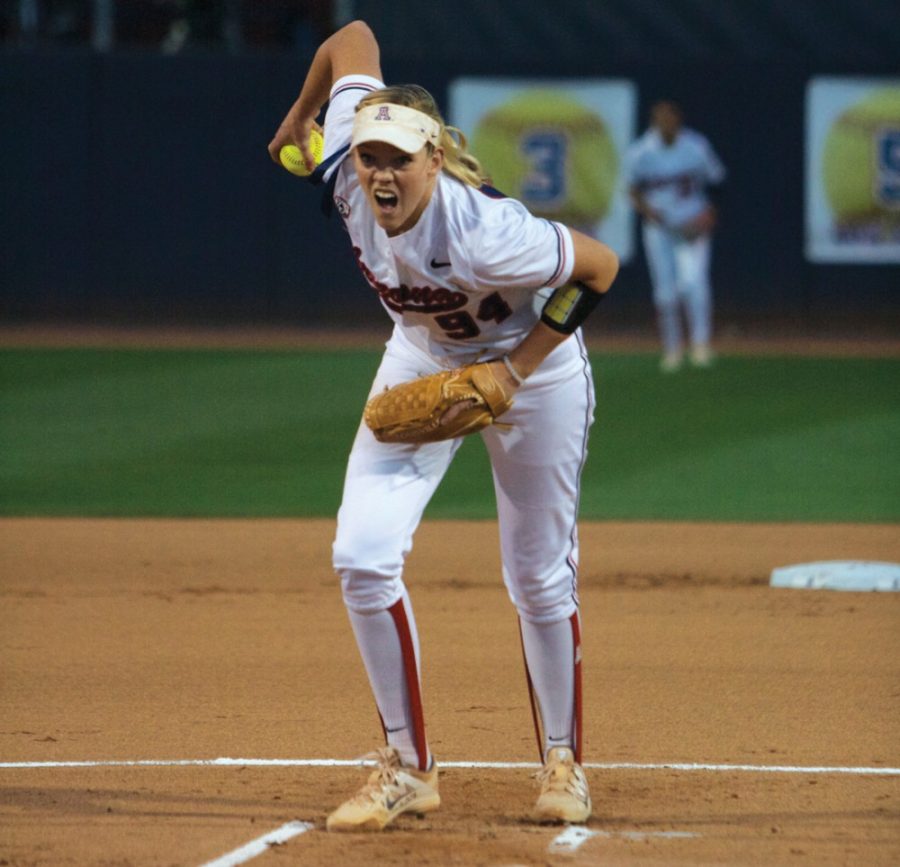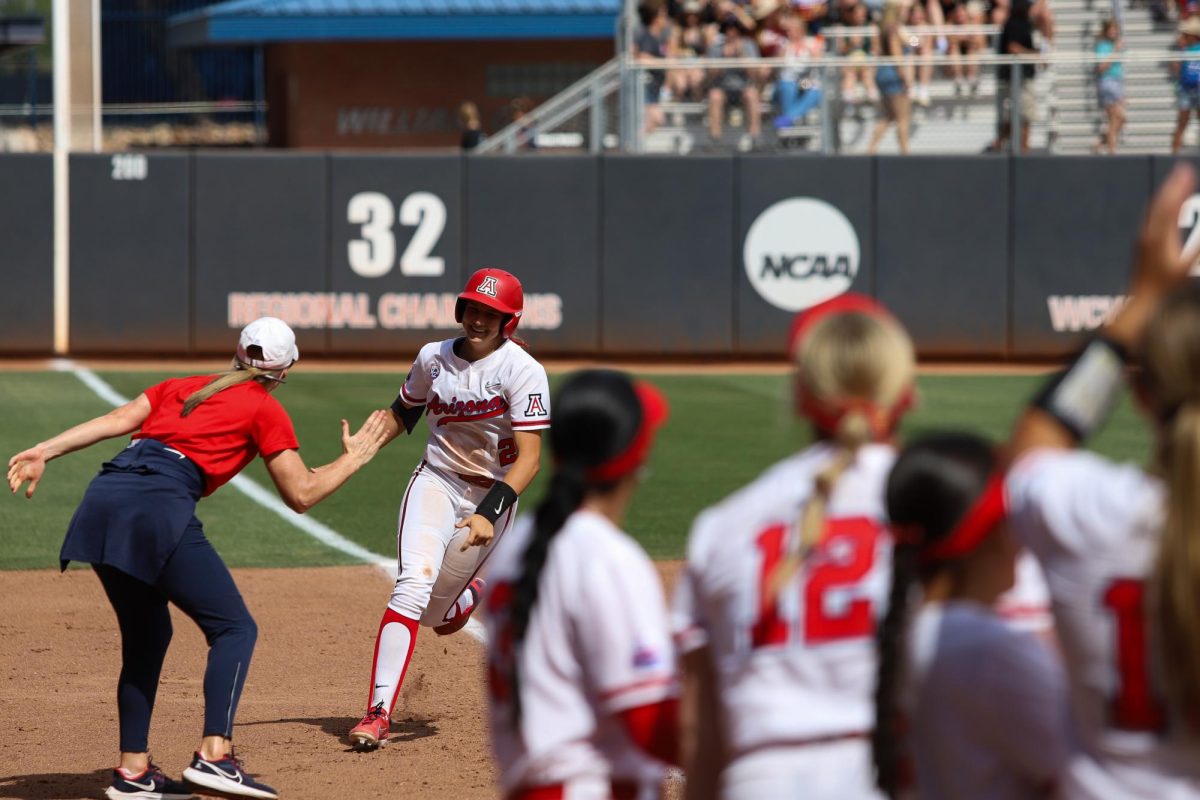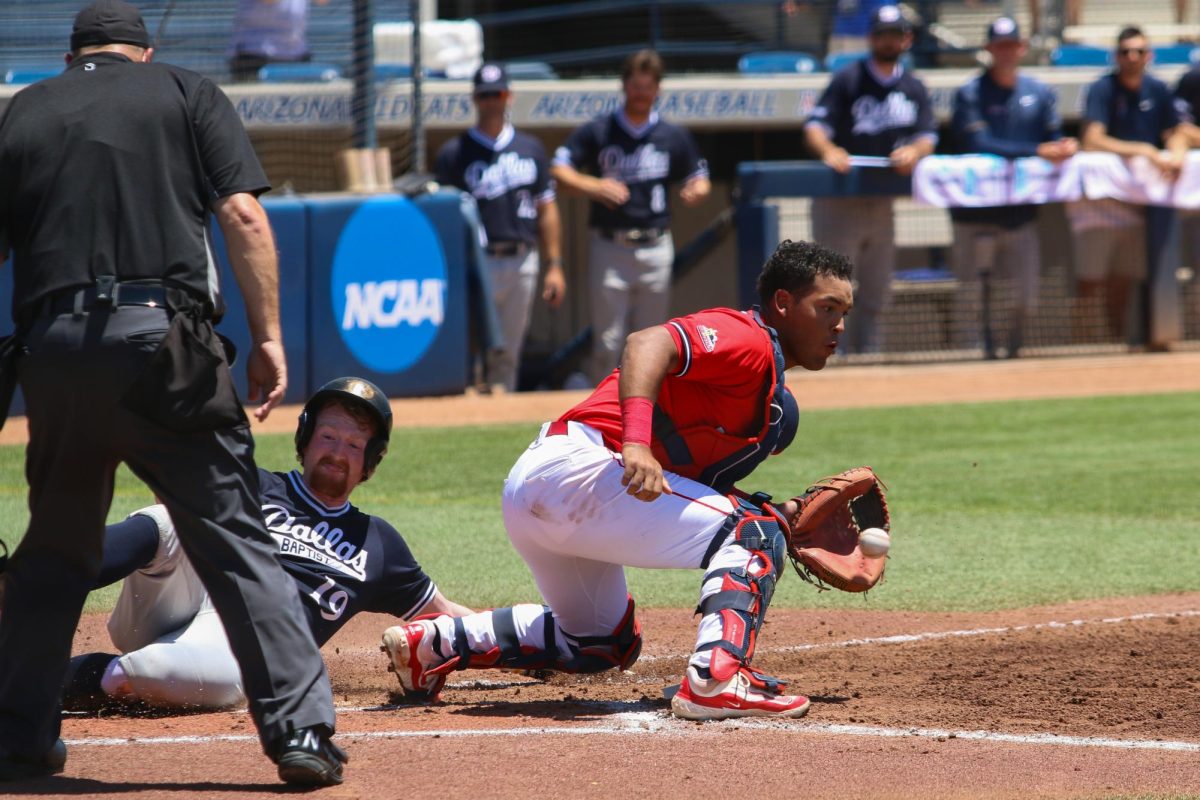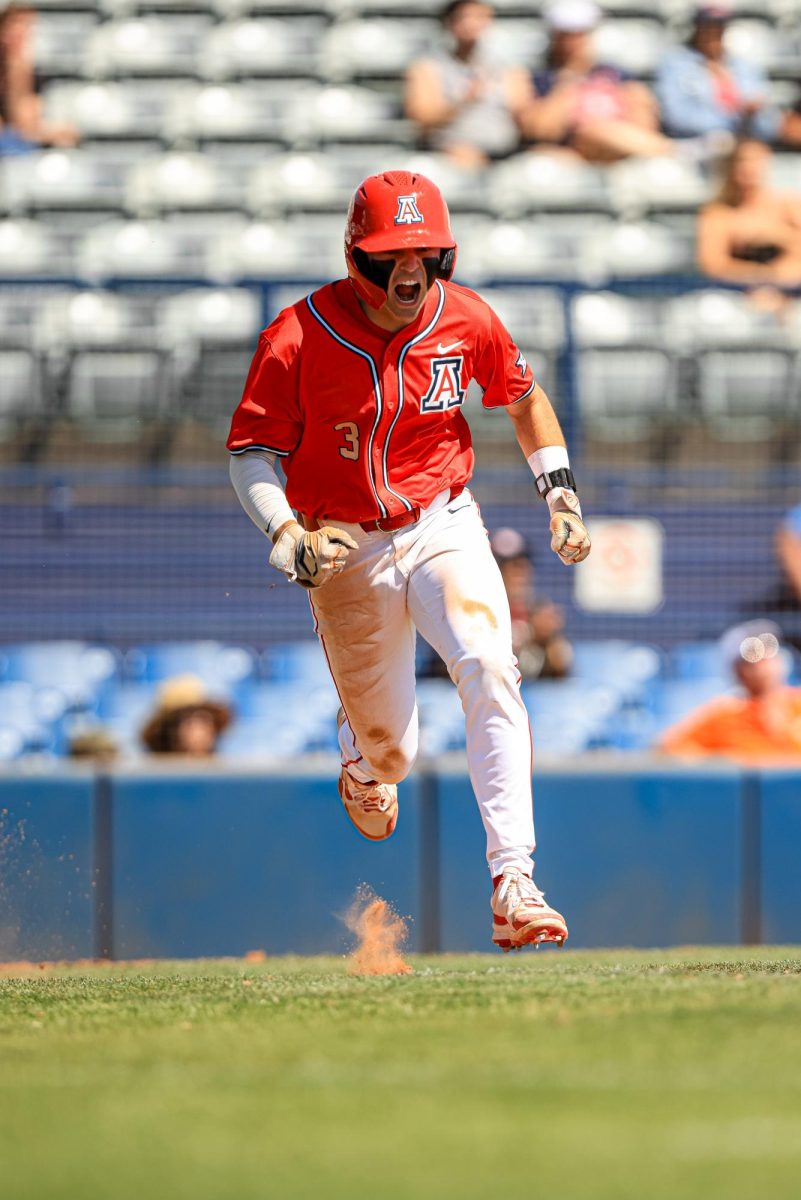From beginning of the 2015 season to end, a common theme held true for Arizona softball.
When the Wildcats were playing inferior opponents, they looked dominant. The offense could score runs at will, and the UA’s young pitching staff was solid enough on the mound.
But when Arizona faced some of the nation’s top teams, the Wildcats came up short consistently.
The UA’s gaudy offensive numbers would often disappear, while inexperience on the mound plagued the team all the way to its season-ending defeat to LSU in the NCAA Super Regionals.
Mike Candrea’s 30th season as head coach of the Wildcats began with promise as Arizona opened the year on a nine-game winning streak.Early on, it became clear that Arizona would have no trouble putting runs on the board against most opponents.
Behind a senior-heavy lineup featuring Kellie Fox, Chelsea Goodacre and Hallie Wilson, the UA quickly established itself as one of the top-hitting teams in the country with a team batting average that hovered over .350 the entire season.
Arizona would also go on to put up impressive power numbers.
Led by Goodacre and sophomore Katiyana Mauga, the Wildcats slugged 104 home runs on the year.
Goodacre led the NCAA with 86 RBIs, while Mauga’s 26 homers led the Pac-12 Conference and ranked third nationally.
For as strong as Arizona was at hitting the ball, pitching never quite matched up.
Sophomore Michelle Floyd and freshman Trish Parks made up the bulk of the work for the Wildcats. Considering neither pitcher had much experience throwing at the college level -— Floyd was used scarcely her freshman year — some learning curves were expected.
The first of those came in a pair of loaded, non-conference tournaments where Arizona got its first taste of elite opponents.
In late February, the Wildcats competed at the Mary Nutter Classic where they faced a foreshadowing matchup with LSU.
Arizona held its own before eventually falling 4-3 to the Tigers.
Then, a few weeks later when the Wildcats faced No. 1 Florida at the Judi Garman Classic, they were run-ruled 10-0. Later that day, Auburn defeated Arizona 20-2 in five innings, handing the UA its worst loss in program history.
Despite taking care of business against weaker opponents and being ranked in the top 15, Arizona was just not at the level of those top teams. LSU, Florida and Auburn would all go on to reach the Women’s College World Series.
In conference play, the Wildcats faced a similar story.
Arizona mostly beat up on the lower-tier programs, but went 1-5 against Oregon and UCLA, two more Women’s College World Series participants.
The pitching was not consistent and the bats fell silent on too many occasions.
Nonetheless, the Wildcats still made it further than most in the postseason by reaching the NCAA Super Regional round for the 10th time in 11 years.
A dramatic regional victory over Minnesota sent the Wildcats to a best-of-three series at LSU, the same Tigers that had beaten the UA way back in February.
This time around, LSU had less trouble disposing of Arizona, defeating the Wildcats 8-0 and 10-5.
For the fifth season in a row, Arizona would miss out on a trip to the Women’s College World Series.
_______________
Follow Ezra Amacher on Twitter.















